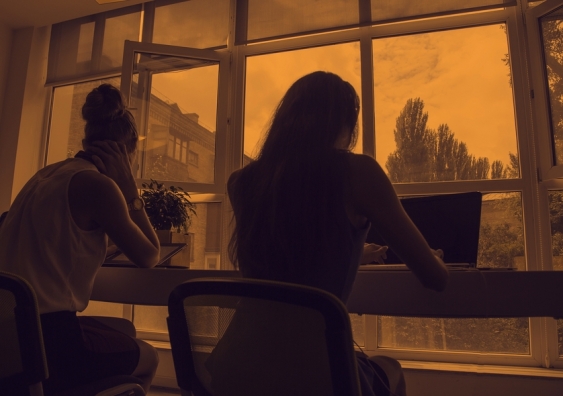The terms ÔÇ£shynessÔÇØ and ÔÇ£social anxietyÔÇØ are often used interchangeably because they both involve feeling uncomfortable in social situations.
However, , or having a shy personality, is not the same as experiencing (short for ÔÇ£social anxiety disorderÔÇØ).
Here are some of the similarities and differences, and what the distinction means.
How are they similar?
It can be normal to feel nervous or even stressed in new social situations or when interacting with new people. And everyone differs in how comfortable they feel when interacting with others.
For people who are shy or socially anxious, social situations can be very uncomfortable, stressful or even threatening. There can be a strong desire to avoid these situations.
People who are shy or socially anxious may ÔÇ£flightÔÇØ (by withdrawing from the situation or avoiding it entirely), ÔÇ£freezeÔÇØ (by detaching themselves or feeling disconnected from their body), or ÔÇ£ÔÇØ (by trying to appease or placate others).
A complex interaction of biological and environmental factors is also thought to influence the development of shyness and social anxiety.
For example, both and have neural circuits that respond strongly to stressful social situations, such as being excluded or left out.
People who are shy or socially anxious commonly report physical symptoms of stress in certain situations, or even when anticipating them. These include sweating, blushing, trembling, an increased heart rate or hyperventilation.
How are they different?
Social anxiety is a diagnosable mental health condition and is an example of an anxiety disorder.
For people who struggle with social anxiety, social situations ÔÇô including social interactions, being observed and performing in front of others ÔÇô trigger intense fear or anxiety about being judged, criticised or rejected.
To be diagnosed with social anxiety disorder, social anxiety needs to be persistent (lasting more than six months) and have a significant negative impact on important areas of life such as work, school, relationships, and identity or sense of self.
Many adults with social anxiety report feeling shy, timid and lacking in confidence when they were a child. However, not all shy children go on to develop social anxiety. Also, feeling shy does not necessarily mean a person meets the criteria for social anxiety disorder.
People vary in how shy or outgoing they are, depending on where they are, who they are with and how comfortable they feel in the situation. This is particularly true for children, who sometimes appear reserved and shy with strangers and peers, and outgoing with known and trusted adults.
Individual differences in temperament, personality traits, early childhood experiences, family upbringing and environment, and parenting style, can also influence the extent to which people feel shy across social situations.
However, people with social anxiety have overwhelming fears about embarrassing themselves or being negatively judged by others; they experience these fears consistently and across multiple social situations.
The intensity of this fear or anxiety often leads people to avoid situations. If avoiding a situation is not possible, they may engage in safety behaviours, such as looking at their phone, wearing sunglasses or rehearsing conversation topics.
The effect social anxiety can have on a personÔÇÖs life can be far-reaching. It may include low self-esteem, breakdown of friendships or romantic relationships, difficulties pursuing and progressing in a career, and dropping out of study.
The impact this has on a personÔÇÖs ability to lead a meaningful and fulfilling life, and the distress this causes, differentiates social anxiety from shyness.
Children can show similar signs or symptoms of social anxiety to adults. But they may also feel upset and teary, irritable, have temper tantrums, cling to their parents, or in certain situations.
If left untreated, social anxiety can set children and young people up for a future of missed opportunities, so early intervention is key. With professional and , patience and guidance, children can be taught to overcome social anxiety.
Why does the distinction matter?
Social anxiety disorder is a mental health condition that for people who do not receive adequate support or treatment.
Without treatment, it can lead to in education and at work, and in developing meaningful relationships.
Receiving a diagnosis of social anxiety disorder can be validating for some people as it recognises the level of distress and that its impact is more intense than shyness.
A diagnosis can also be an important first step in accessing appropriate, evidence-based treatment.
Different people have different support needs. However, recommend cognitive-behavioural therapy (a kind of psychological therapy that teaches people practical coping skills). This is often used with (a kind of psychological therapy that helps people face their fears by breaking them down into a series of step-by-step activities). This combination is effective , and in .
For more support or further reading
Online resources about social anxiety include:
This Way UpÔÇÖs for managing excessive shyness and fear of social situations
Beyond BlueÔÇÖs on social anxiety
a guide to if you have social anxiety, from the Western Australian health department
social anxiety from the University of Queensland
inroads, a for young adults who drink alcohol to manage their anxiety.
We thank the Black Dog Institute members for providing feedback and input for this article and our research.![]()
, Postdoctoral research fellow and clinical psychologist, and , Professor, NHMRC Emerging Leader & Clinical Psychologist,
This article is republished from under a Creative Commons license. Read the .







